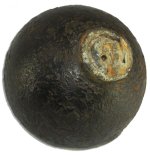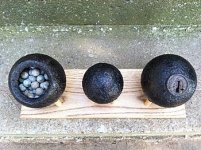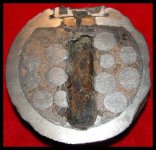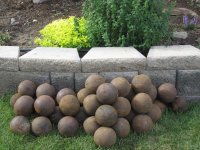zebra
Junior Member
I'm fairly new to this hobby so, I'd rather ask a stupid question and be sure than to assume anything and be dead.
I'm hunting in an old mansion estate where the presence of cannonballs is quite possible. This is an area very rich in colonial, revolutionary, and civil war history. My underwater archeology experience has taught me that the typical cannonball on a ship was solid and used to bring down masts and punch holes, etc..
But it is my understanding that cannonballs on land can be explosive type with fuses and such. Should I be concerned if I unearth one? What precautionary procedures should I be employing? How should it be handled....during excavation and after excavation? My understanding is that they are not dangerous to unearth. The problem comes if one decides to drill a hole or saw into them. Please correct me if I'm wrong.
Thank you for your information.
I'm hunting in an old mansion estate where the presence of cannonballs is quite possible. This is an area very rich in colonial, revolutionary, and civil war history. My underwater archeology experience has taught me that the typical cannonball on a ship was solid and used to bring down masts and punch holes, etc..
But it is my understanding that cannonballs on land can be explosive type with fuses and such. Should I be concerned if I unearth one? What precautionary procedures should I be employing? How should it be handled....during excavation and after excavation? My understanding is that they are not dangerous to unearth. The problem comes if one decides to drill a hole or saw into them. Please correct me if I'm wrong.
Thank you for your information.






